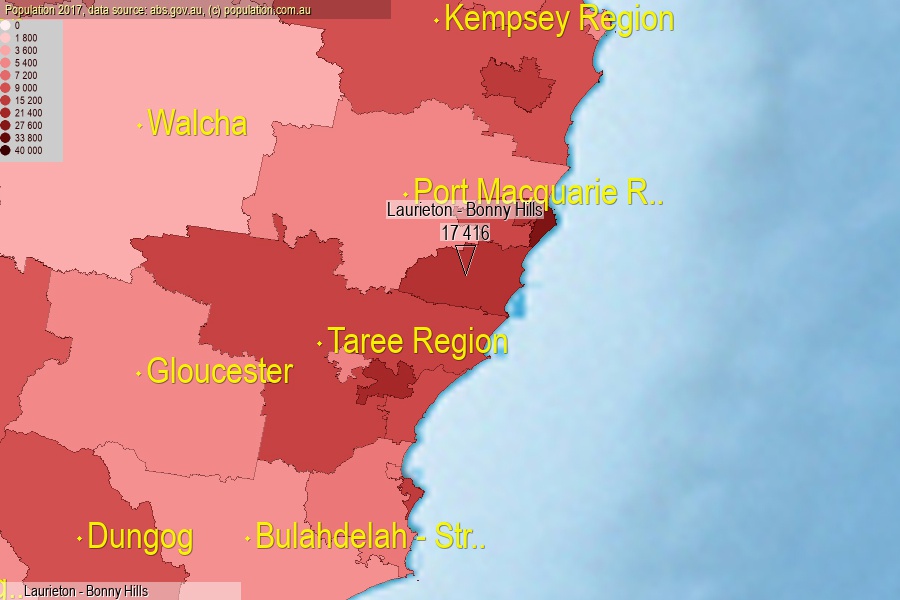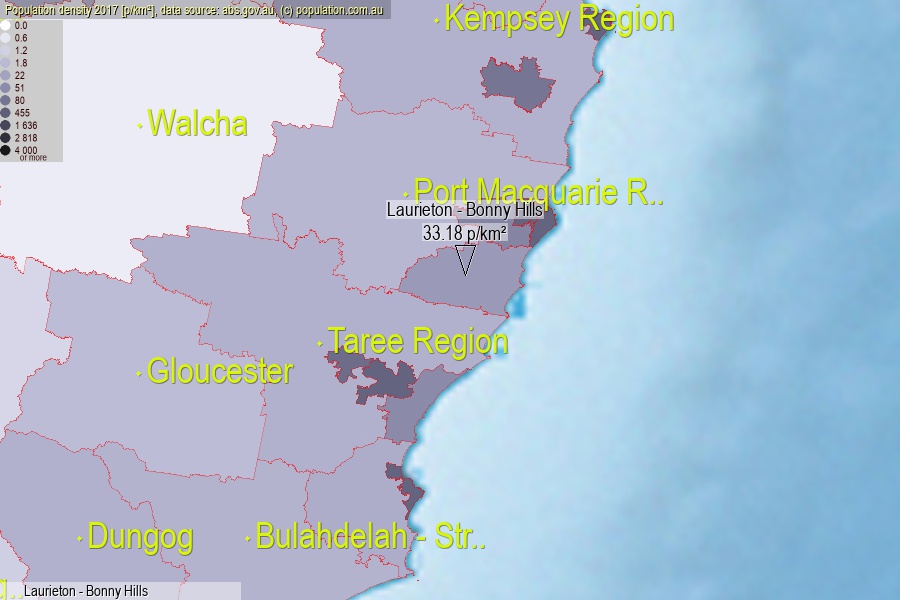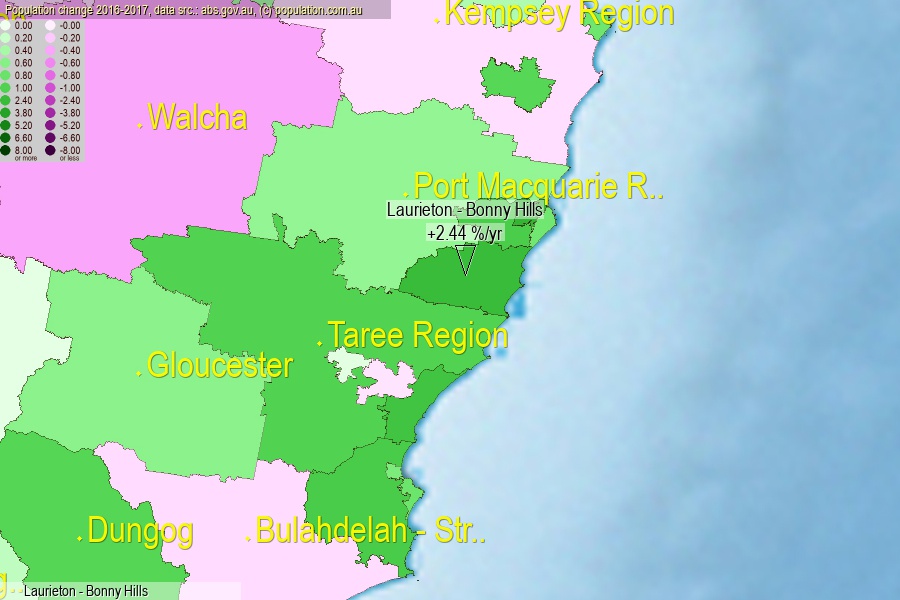 population.com.au
population.com.auLast official estimated population of Laurieton - Bonny Hills (as Statistical Area Level 2) was 17 416 people (on 2017-06-30)[2]. This was 0.07% of total Australian population and 0.219% of NSW population. Area of Laurieton - Bonny Hills is 524.90 km², in this year population density was 33.18 p/km² . If population growth rate would be same as in period 2016-2017 (+2.44%/yr), Laurieton - Bonny Hills population in 2025 would be 21 122. [0]



Click to enlarge. Laurieton - Bonny Hills is located in the center of the images.
Population [people], population density [p./km²] and population change [%/year] [2]
View borders » (new window) [4]
[1991-1992] +3.55 %/Yr.
[1992-1993] +2.70 %/Yr.
[1993-1994] +2.60 %/Yr.
[1994-1995] +2.62 %/Yr.
[1995-1996] +2.08 %/Yr.
[1996-1997] +2.52 %/Yr.
[1997-1998] +3.51 %/Yr.
[1998-1999] +3.03 %/Yr.
[1999-2000] +3.96 %/Yr.
[2000-2001] +2.77 %/Yr.
[2001-2002] +3.75 %/Yr.
[2002-2003] +2.50 %/Yr.
[2003-2004] +2.18 %/Yr.
[2004-2005] +1.56 %/Yr.
[2005-2006] +0.65 %/Yr.
[2006-2007] +1.56 %/Yr.
[2007-2008] +2.05 %/Yr.
[2008-2009] +1.02 %/Yr.
[2009-2010] +0.44 %/Yr.
[2010-2011] +1.03 %/Yr.
[2011-2012] +0.39 %/Yr.
[2012-2013] +0.27 %/Yr.
[2013-2014] +0.78 %/Yr.
[2014-2015] +1.51 %/Yr.
[2015-2016] +1.49 %/Yr.
[2016-2017] +2.44 %/Yr.
[0] Calculated with linear interpolation from officially estimated population
[1] Read more about SA2 and Australian Statistical Geography Standard (ASGS) on abs.gov.au
[2] Population data from Australian Bureau of Statistics (Population and density: 2017; change: 2016-2017)
[3] Digital Boundaries: Australian Statistical Geography Standard (ASGS) 2016.
[4] Border coordinates are simplifyed using Ramer-Douglas-Peucker algorithm.